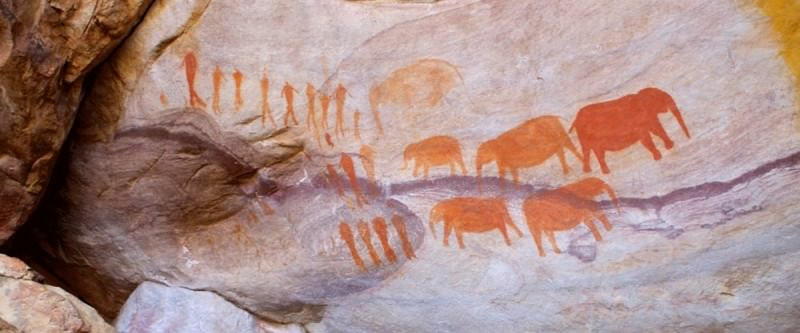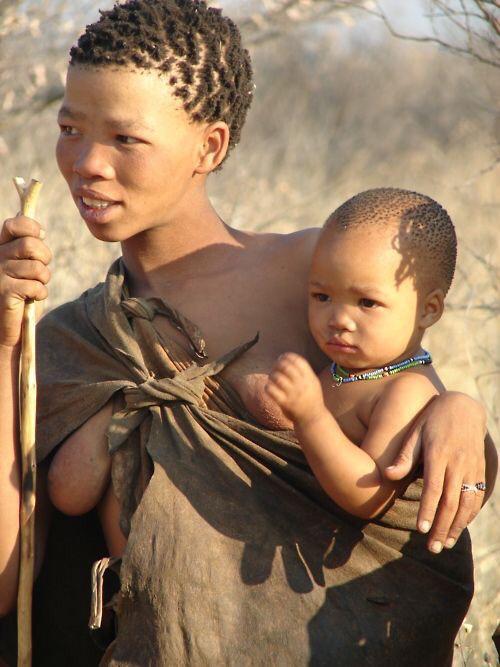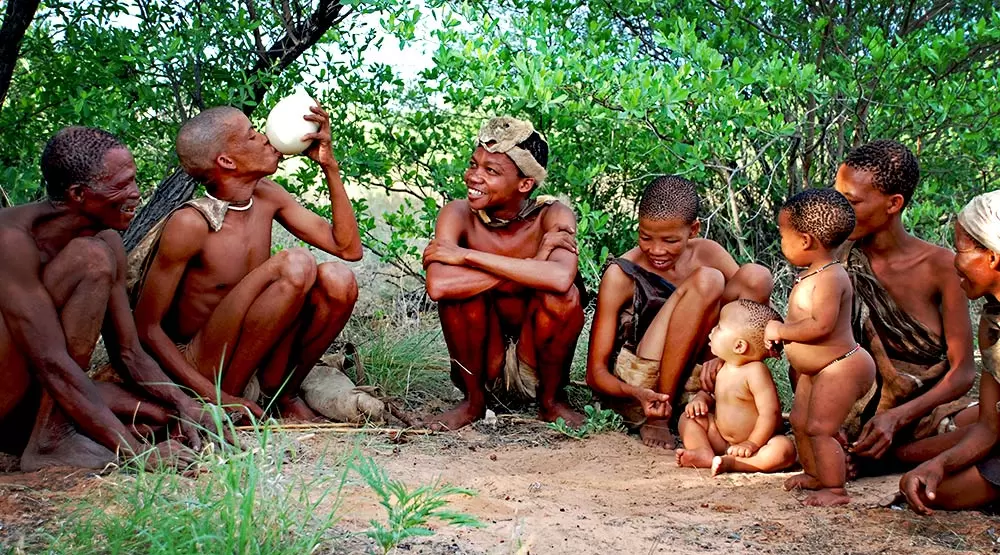
As if we are already neglected enough with the lack of knowledge we learn about Africa, little is known of its very own people. Much less is known of South African clans and no the Zulu nation was not the only South African native population 😒. In this post, we will learn about the Khoisan people who inhabited the Cape region of South Africa.

Originally called the San people who became pastoralists, they named themselves the Khoikhoi meaning “men of men” or “real people”. The Khoikhoi are believed to have originated in the northern region of Botswana and reached the Cape of Africa approximately 2,300 years ago. The Khoikhoi were of short stature and a dark yellowish-brown complexion who are now almost extinct. Amongst the Khoikhoi were the “Khoekhoe pastoralists”, “San hunter-gatherers” and eventually the “Bantu agriculturalists”.

The Khoikhoi were pastoralists therefore moving around to find grazing land for their animals. They moved depending on the season and only stayed in one place for some weeks. Therefore their houses had to be very light and easy to erect and take apart. The animals, especially cattle, were a sign of wealth to the Khoikhoi and they only ate cattle that had died or had been stolen from their enemies. The Khoikhoi consisted of both rich and poor as those with animals were considered wealthy while the San considered themselves to be equal and shared everything. NÁ má, later incorrectly called Hottentot, was the most populous and widespread of the Khoikhoi and San languages.

The first written account of European contact was with the Portuguese in the 15th and 16th centuries. Encounters between the Portuguese and the Khoikhoi were often violent. In 1510, fifty Portuguese men were killed in the Battle of Salt River. By the late 16th century other Europeans including the Portuguese frequently stopped in the region on their way to the indies trading with the Khoikhoi. The Europeans traded tobacco, copper, and iron, in exchange for fresh meat. The Cape served as a post where traders could restock their ships with fresh water and food on the long and arduous journey to East Asia. However, as time went on Dutch brought soldiers, slaves, and settlers to the Cape from the Netherlands and the East and eventually, the station became a conventional colony when Europeans started to settle in the mid 17th century. The Cape was not intended to be a colony, but a halfway house of sorts, and therefore the local inhabitants could not be enslaved.

The requirements of the passing ships soon became too great for the employees of the Dutch East India Company (VOC) and a group of settlers were moved to farms of their own. These men became free burghers or citizens who had gained their release from their contracts with the VOC by taking up plots of land and by entering into a burgher militia. The same as in the new world, as white settlers moved in, smallpox ravaged the local population. The Khoe-speaking clans suffered high mortality as immunity to the disease was rare.
The Cape soon became a colonial project and as a result of the importing of slaves, the economy developed as slave-based. This state of affairs resulted in a social system of master and servant becoming firmly entrenched with the Europeans as masters while indigenous people were delegated to slaves and servants.

The Khoikhoi were nicknamed the ‘Hottentots’ by settlers because the sound of their language (clicking sounds) was so different, and they could not pronounce many of the words and sounds. Today the word Hottentot is considered a derogatory term. The San hunter and gatherers were nicknamed “Bushmen”, another term considered derogatory today. As the Khoikhoi and the San people lived closely together they are now referred together as the Khoisan people.

Over the following century, the Khoe-speaking peoples were steadily driven off their land, resulting in numerous northwards migrations, and the reformulation of many nations and clans, as well as the dissolution of many traditional structures. As social structures broke down, many Khoikhoi settled on farms and became bondsmen (bondservants, serfs) or farm workers; others were incorporated into clans that persisted. Many white farmers employed Khoisan servants as well as slaves in the Eastern Cape. In the West, they were employed as wagon drivers and field hands at harvest.

Early European settlers in southern Africa sometimes intermarried with Khoikhoi women or slave women from the Cape, who resided in the Dutch Cape Colony in the 18th century, resulting in a sizeable mixed-race population now known as the Griqua. The colonial designation of “Baasters” came to refer to any African clans that had European ancestry in some part and adopted certain Western cultural traits. Though these were later known as Griqua (Xirikua or Griekwa) they were known at the time as “Basters“. The name Baster is derived from bastaard [nl], the Dutch word for “bastard” (or “crossbreed”) – not someone born illegitimately but rather born to two races one being superior to the other 😒. The term was also used to refer to subordinate blacks who could speak Dutch, ride, and shoot.

At the start of the 18th century, the Khoikhoi in the Western Cape lived in a co-operative state with the Dutch. By the end of the century, the majority of the Khoisan operated as ‘wage laborers’, others became slaves. As grazing licenses in the area became available to white settlers, colonial expansion continued further into the land of the Khoi people. Many Khoi people lost their land and livestock.
In 1755 and 1767 two more smallpox epidemics nearly eradicated all the Khoikhoi and those who survived became westernized, Christianised, and learned to speak Dutch, which later became Afrikaans, and dressed in European clothes.

Of the European theories proposed on the origins of the Khoikhoi people, the most notable is that they originated from Egypt. The reasoning for this included the distinctive Caucasian elements of the Khoikhoi’s appearance, a “want to worship the moon'”, an apparent similarity to the antiquities of Old Egypt, and a “very different language” to their neighbors. This conviction is echoed in an introduction to the Zulu language (Bantu agriculturalists), which comments upon the language’s various resemblances to Hebrew.

Our good friend Charles Darwin (being sarcastic here) wrote about the Khoisan, commenting that their steatopygia evolved through sexual selection in human evolution, and that “the posterior part of the body projects in a most wonderful manner” 😒😒😒. Google Venus Hottentot for more information. I am not about to write about that foolishness – but you can see the origin.
In the 1990s, a genomic study found that various Y-chromosome studies confirmed that the Khoisan carry some of the most divergent (oldest) Y-chromosome haplogroups. Mitochondrial DNA studies also showed evidence that the Khoisan people carry high frequencies of the earliest haplogroup branches in the human mitochondrial DNA tree. Basically, the Khoisan people have one of the oldest DNA strands.
Here is a story about an African people, who like others way of life was drastically interrupted by colonialism. They once owned the lands but were eventually driven out. Even becoming laborers to the colonizers, as if they were nothing less than working horses. The one good thing from this story is that at least most were not torn from their homelands to a faraway continent to be stripped of everything they knew. But we all know about Aparthied. That’s the next chapter in their history for which I am not ready to write about yet 😩.
Sources:
https://en.wikipedia.org/wiki/Baster
https://en.wikipedia.org/wiki/Khoisan
https://www.sahistory.org.za/article/khoisan
https://www.sahistory.org.za/article/dutch-and-khoisan